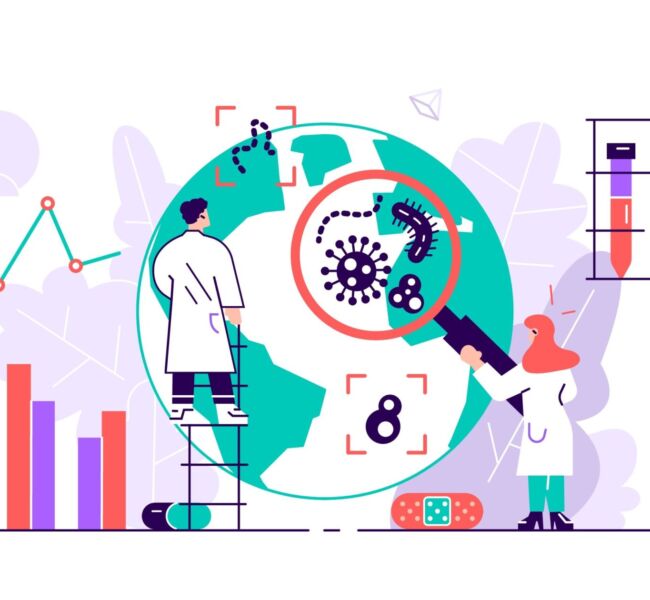On the power of compelling communications to motivate patients and HCPs

With Anita and Dennis’s expertise, we’re excited to be expanding the work we do at Spurwing in Patient Engagement and Med Comms. We sat down for a discussion with our in-house experts on the value of this type of communications and where the differences lie between Med Comms and Consumer Healthcare Communications.
Anita, you bring a wealth of frontline experience to our team. Can you tell us about your formal qualifications and background as a pharmacist, and how you used them to work with pharmaceutical clients in China?
I have a double honours in Physiology and Pharmacy, the latter being my initial career path because of my love for patient care.
The clinical capability of a pharmacist is widely understood as being underutilised. Though there is still a long way to go, during my time as a pharmacist it was encouraging to see a shift in the willingness to allow pharmacists to take on more clinical services to reduce the burden on GPs and other primary healthcare services. I was involved with the launch of successful vaccination clinics and I’ve administered lots of influenza and Covid-19 jabs throughout my career.
Some of the more well-known brands I’ve worked with include, AstraZeneca, Boehringer Ingelheim and Abbvie. I’m familiar with oncology and cardiology med comms, and these were my main areas when I was working in medical communications in Shanghai.
Dennis, what are some of the brand names you’ve worked with and which therapeutic areas are you the most familiar with?
I’ve worked with many pharmaceutical companies in and across Asia Pacific, including Abbott, Amgen, AstraZeneca and Pfizer. My areas of interest and expertise are cardiology, infectious diseases and oncology, particularly breast cancer and NSCLC.
One of the most memorable projects I worked on was in cardiology. My team developed a communications strategy to promote a successful clinical trial to cardiologists in Asia. When the pandemic hit, we had to pivot quickly from face to face activities to digital. The findings of the study, in an Asian population, were critical as this population is often overlooked in clinical trials so we were determined to make sure our work still made an impact.
We arranged an online Medical Education series throughout 2020 and developed toolkits that were easier to adapt for Asian markets, ensuring that our doctors were educated and understood the significance of this very important study.
How do you think Med Comms differs to consumer healthcare communications?
Anita: Medical Communications is about telling an evidence-based story, supported with data, to a target audience that generally has a baseline understanding of scientific principles. Med Comms can take many forms. It may be developing a manuscript for a clinical trial, where the target audience is a HCP’s or PI working in a science-related field who is already familiar with the technology.
Consumer healthcare communications demand a more human element that focuses on the patient, whose priorities may be more complex or driven more by emotion.
What do you wish more people knew about medical communications?
Dennis: Understanding the importance of Med Comms is one thing, but finding the right agency partner to help plan, execute and influence healthcare practitioners, patients and the healthcare organisations that matter can be the stumbling block to making sure great science gets the recognition it deserves. An ideal strategic partner should comprise a team who understands the industry well, is well connected and is supported by experienced communicators with the right qualifications.
Anita: This is where the world is heading. To some extent, the gap between medical comms and healthcare comms is closing. With the power of the internet and access to scientific research, people are taking ownership of their health. The pandemic was a turning point for this, where terms like ‘vaccine’ and ‘virus’ became common household terms, for everyday people this was enough to feed their curiosity to seek out health information for themselves.
Access to evidence-based health information at our fingertips is becoming important for everybody, not just consumers. Communicators like us who speak the language of healthcare provide a great depth of understanding. We’re able to zoom in and out of the technical details.
Anita, what was it that pushed you towards healthcare communications rather than healthcare practice?
A turning point was when I found myself frustrated with materials we were given as clinicians to educate patients, often they were text heavy, filled with far too much technical language – and often ended up in the bin! It got me thinking about how could I use my skills and experience to make these experiences more meaningful and help everyday people read these materials and improve their health literacy. And that’s when I decided healthcare comms was a route I wanted to pursue. The combination of the science, the creativity, and the strategy is what gets me excited!
Dennis, where in the region have you worked and what are some key learnings about these markets?
Having worked in both Singapore and Hong Kong, I’ve come to appreciate the nuances in healthcare communications between these two markets. In Hong Kong, prescription medications are promoted directly to you as a consumer in a way that is very similar to the US style of marketing drugs. It isn’t uncommon to see adverts for Viagra when you’re walking to the train station for your morning commute. I may have even been part of the team who put them there! In Singapore, this would be unheard of and so the same product would need a very different awareness strategy.
Understanding the nuances to regulation are very important as a medical communicator. Without knowing how pharmaceutical companies operate internally, agencies can end up in an endless cycle of revisions to creative outputs that don’t meet internal guidelines. Getting under the skin of a client and their processes from the get-go is invaluable.
Another important thing to know as a medical communicator in this region is that Asia isn’t usually the first market for a drug launch, it’ll first be approved in the US or Europe and the challenge is to make that product relevant and exciting here for regional populations.
Which part of your experience makes you both unique as communicators at Spurwing?
Anita: My strong technical background and front-line healthcare experience means I can easily digest scientific content, and my practical experience with patients enables me to bring new questions to the conversation that can support a comprehensive communications strategy.
Dennis: Because of my hybrid creative and technical experience, I can bridge the middle ground between communications objectives and the requirements of scientific and regulatory teams to build a successful campaign that reaches the people who matter.
If you’d like to learn more about how the team at Spurwing can help you to create compelling content to engage patients and healthcare professionals, get in touch at Hello@spurwingcomms.com





